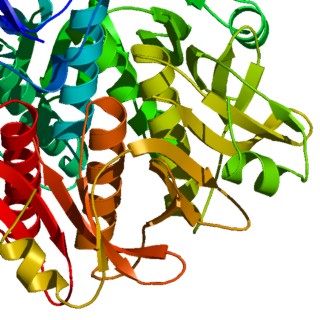 |  |
| PyMOL built-in ribbons | "molauto -nice ... | molscript -r > ..." |
Cartoon ribbons in PyMOL rival those of the popular Molscript/Raster3D packages, but PyMOL makes creating high quality images much easier. While PyMOL can read Molscript output directly (see the chapter on Molscript), this is no longer necessary or as convenient as utilizing PyMOL's new built-in cartoon ribbon capability:
 |  |
| PyMOL built-in ribbons | "molauto -nice ... | molscript -r > ..." |
Can you tell the difference? Molscript's cartoons are slightly more geometrically perfect, but PyMOL comes pretty darn close!
Note that all of the images in this section were colored using the rainbow feature (color pop-up menu) and ray-traced with antialising enabled.
One of the advantages of PyMOL's cartoon ribbon facility is that it is easy to switch between "smoothed" versions of protein secondary structure, and "realistic" renditions which portray actual main chain coordinates. Although cartoons are often used solely to represent protein structures in a schematic sense, sometimes it is desirable to combine a schematic overall picture with atomic resolution in one particular location. However, unless the cartoon track properly with alpha-carbon positions, the resulting figures will look a little silly:
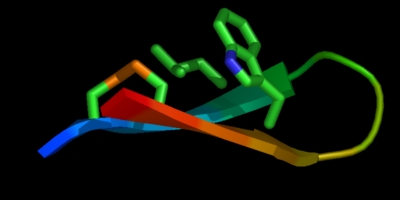
In the above image, the side chains are floating off into space. Disabling "flat sheets" from the Cartoons Menu or issuing the command
set cartoon_flat_sheets = 0
will make the beta strands follow the true path of the backbone through space and give a more accurate rendition of the structure.
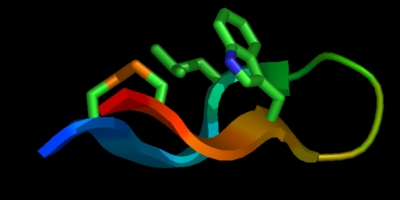
The appearance of a cartoon over the entire molecule will be substantially different when all smoothing features are turned off. For instance, with smoothing enabled:
set cartoon_flat_sheets = 1 set cartoon_smooth_loops = 1
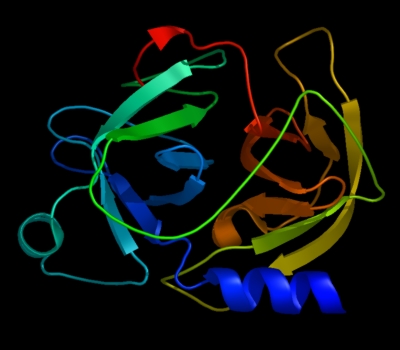
the image differs substantially from:
set cartoon_flat_sheets = 0 set cartoon_smooth_loops = 0
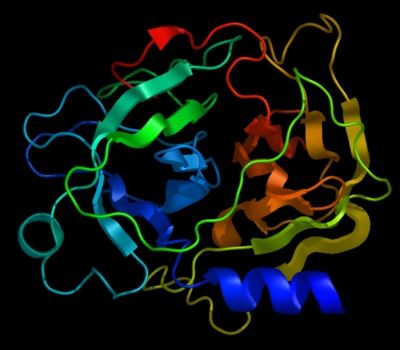
which more accurately reflects the true path of the peptide backbone:
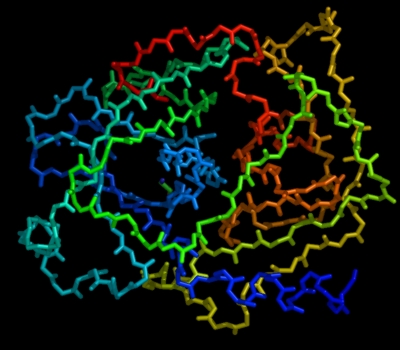
To facilitate beautiful imagery, smoothing is enabled by default (just like Molscript). Just be sure to turn it off when you want to study structures at atomic resolution (always remember, real life is much more complicated than what you seen in cartoons).
When secondary structure information is present, multiple cartoon types can be automatically combined to compose a conventional figure. You can also ignore such information, and manually control which cartoons are used when and where.
show cartoon cartoon automatic # default
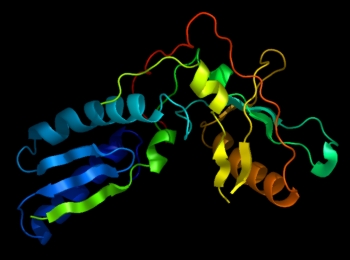
cartoon loop
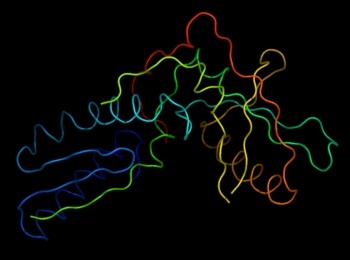
cartoon rect
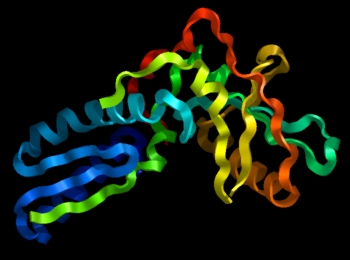
cartoon oval
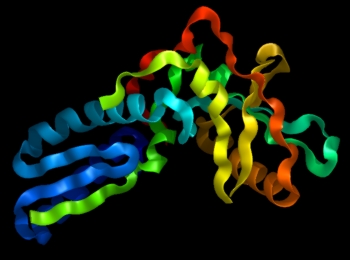
cartoon tube
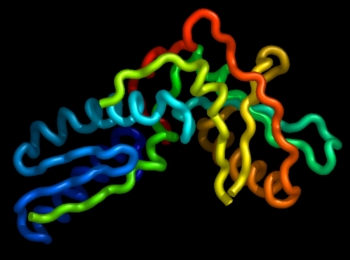
cartoon tube, 1:49/ cartoon arrow, 50:99/ cartoon loop, 100:149/ cartoon oval, 150:199/ cartoon rect, 200:250/
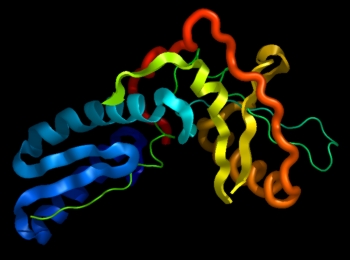
All cartoon ribbons have associated parameters accessible from the "set" command which allow you to change their appearance. See the chapter on Settings for more information.
set cartoon_fancy_helices=0
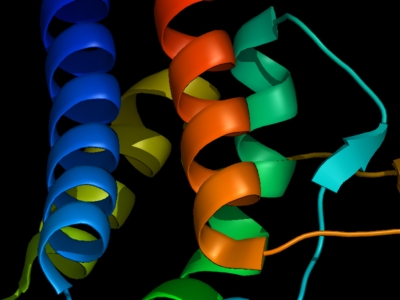
Molscript addicts who simply must have those ribbon helices with tubular edges will not be disappointed with "fancy helices":
set cartoon_fancy_helices=1
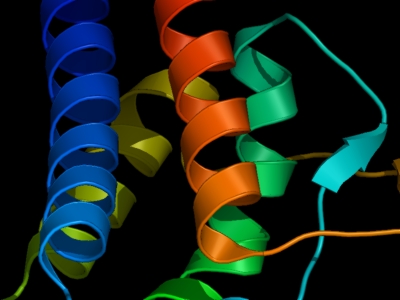
Not bad for free software, eh?
It is strongly recommended that you read in PDB files which already have correct secondary structure assignments from a program like DSSP. PyMOL includes a slow and very coarse secondary structure assignment function
util.ss <selection>which should only be used as a last resort. WARNING: it will make mistakes, so don't publish anything based on this algorithm! It can be accessed from the GUI under the action (diamond) menu for objects.